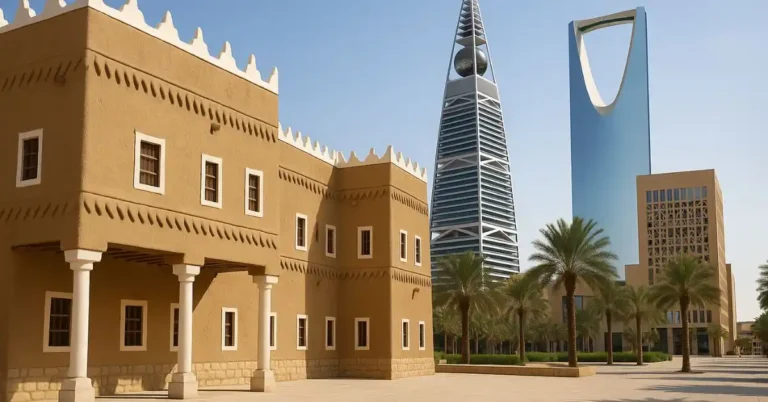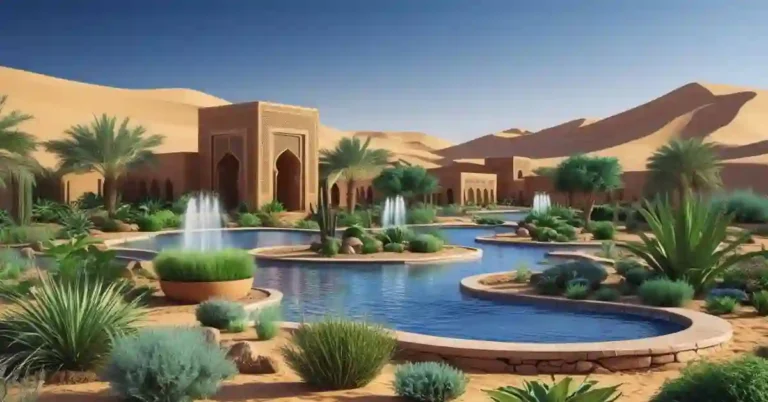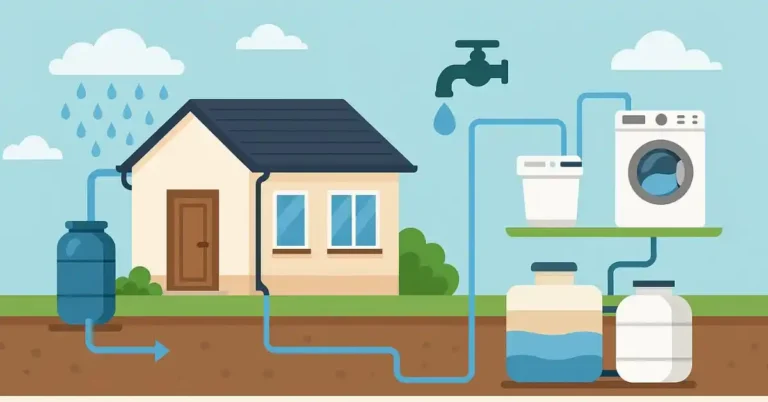Vision 2030 Sustainability Goals: Saudi Arabia’s Path to a Greener Future
In the heart of the Arabian Peninsula, a remarkable transformation is underway. Saudi Arabia, a nation historically defined by its vast oil reserves, is now pioneering an ambitious sustainability agenda that aims to reshape not only its economy but its environmental footprint for generations to come.
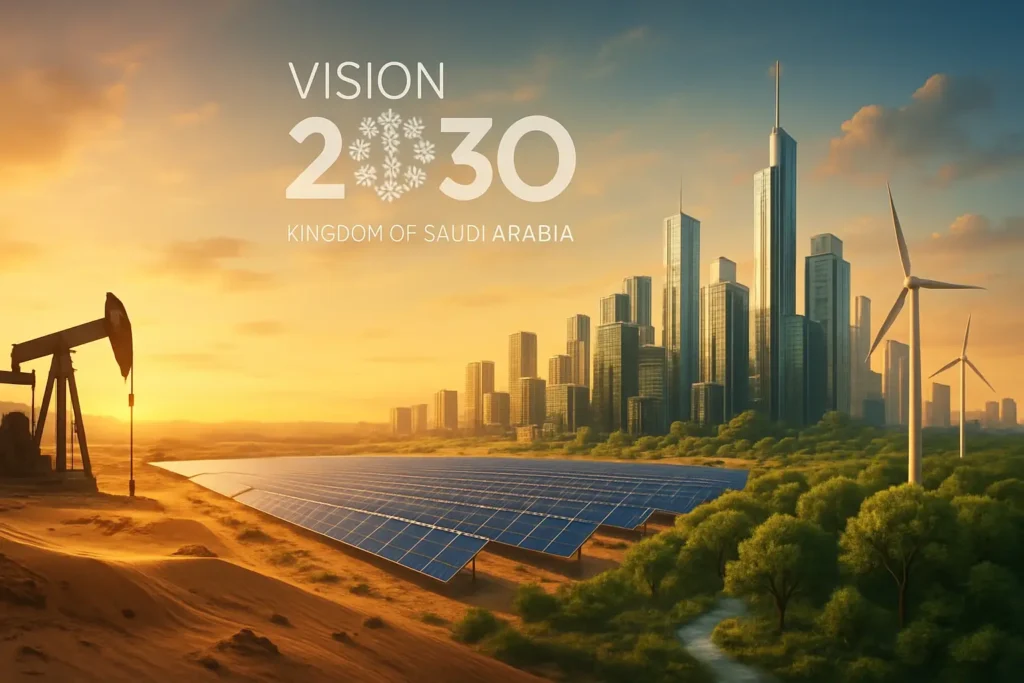
At the center of this transformation is Vision 2030 sustainability goals, the Kingdom’s comprehensive strategic framework that places sustainability as a cornerstone of national development.
The Genesis of Vision 2030 Sustainability Goals
Launched in 2016 under the leadership of Crown Prince Mohammed bin Salman, Vision 2030 emerged as Saudi Arabia’s response to pressing economic and environmental challenges. T
he vision recognized that the Kingdom’s long-term prosperity could not rely solely on hydrocarbon resources and acknowledged the urgent need to address climate change and environmental degradation.
The sustainability components of Vision 2030 were further strengthened in 2021 with the inauguration of the Saudi Green Initiative (SGI), which Crown Prince Mohammed bin Salman described as “a whole-of-society initiative, uniting all sustainability efforts in the country to rapidly scale up the Kingdom’s climate action.”
This initiative has become the primary vehicle for implementing Vision 2030 sustainability goals environmental objectives, with three overarching targets guiding its work: emissions reduction, afforestation, and land and sea protection.
Since SGI’s launch, 77 initiatives corresponding to these three targets have been activated, representing an investment of more than $186 billion.
These initiatives are not merely environmental in focus but are designed to drive sustainable economic growth by bringing together government agencies, private sector entities, and civil society in a coordinated effort to transform Saudi Arabia’s relationship with its natural environment.
Ambitious Targets for Emissions Reduction
At the heart of Vision 2030 sustainability goals is a commitment to dramatically reduce carbon emissions.
The Kingdom has set a target to reduce carbon emissions by 278 million tons per annum (mtpa) by 2030.
This ambitious goal is part of a broader strategy to achieve net-zero emissions by 2060 through the implementation of the Circular Carbon Economy approach.
The path to these targets involves a multidimensional strategy.

Most notably, Saudi Arabia has committed to generating 50% of its electricity from renewable sources by 2030, a dramatic shift for a nation that has historically relied almost exclusively on fossil fuels for its energy needs.
Beyond the domestic energy mix transformation, SGI is steering a range of initiatives to reduce emissions, including investing in new energy sources, improving energy efficiency, and developing carbon capture and storage programs.
The scale of this transformation cannot be overstated. According to the latest progress reports, Saudi Arabia is making significant strides toward these goals. The Kingdom’s approach to emissions reduction is comprehensive, addressing not only energy production but also industrial processes, transportation, and urban development.
This holistic strategy recognizes that achieving meaningful emissions reductions requires action across all sectors of the economy.
Greening the Desert: Afforestation and Land Restoration
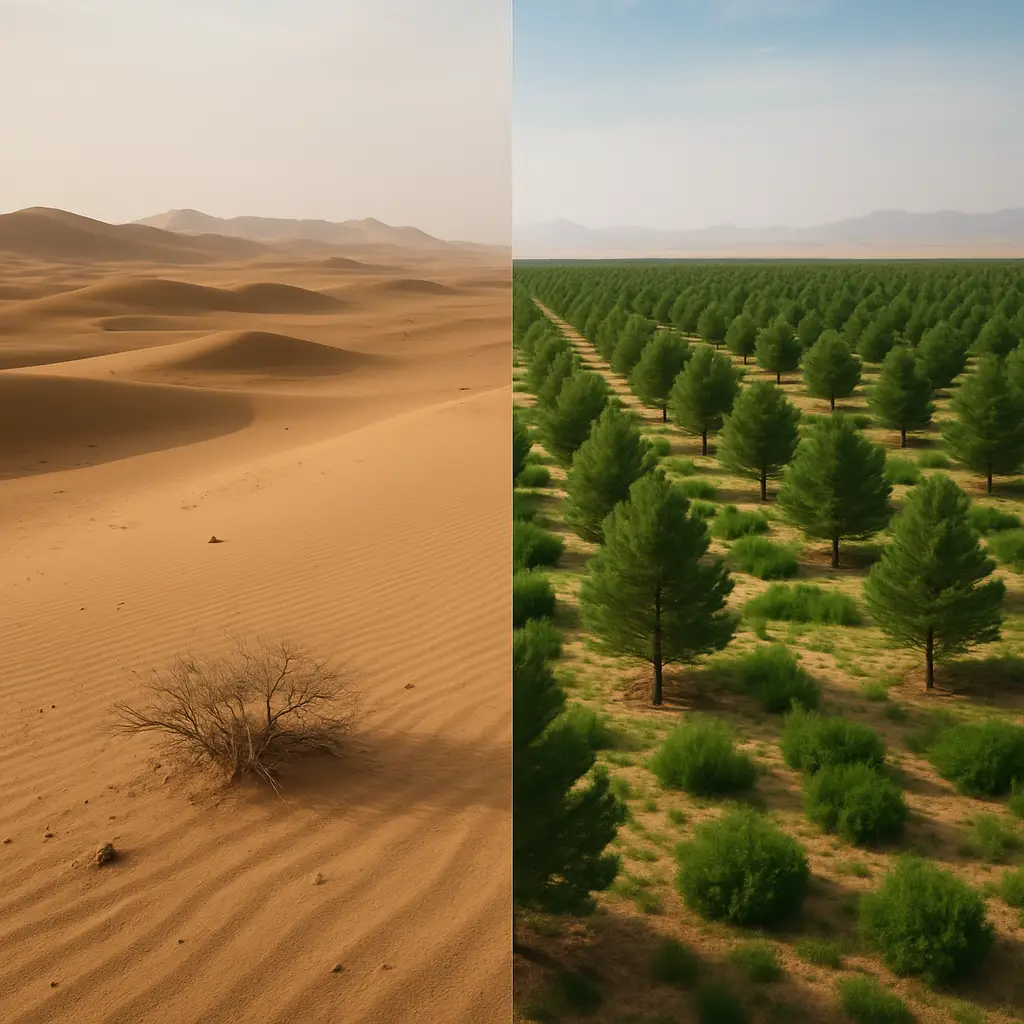
Perhaps the most visually striking aspect of Vision 2030 sustainability goals is its ambitious afforestation goal. Saudi Arabia has pledged to plant 10 billion trees across the country, an initiative that would transform vast areas of desert into green spaces and create one of the world’s largest afforestation programs.
This massive undertaking serves multiple purposes: combating desertification, reducing carbon in the atmosphere, improving air quality, and enhancing biodiversity. As of 2024, significant progress has been made, with 115 million trees planted and 188,000 hectares of degraded land successfully rehabilitated.
The afforestation efforts extend beyond simply planting trees. They include comprehensive ecosystem restoration, the development of sustainable agricultural practices, and the creation of green spaces in urban areas.
Cities like Riyadh and Jeddah are being transformed with parks, gardens, and green corridors that improve quality of life for residents while contributing to climate resilience. These initiatives demonstrate Saudi Arabia’s understanding that environmental sustainability and human wellbeing are deeply interconnected.
By creating greener urban environments and restoring natural ecosystems, the Kingdom is not only addressing climate change but also enhancing the quality of life for its citizens.
Protecting Land and Sea Ecosystems
The third pillar of Saudi Arabia’s sustainability strategy focuses on protecting the Kingdom’s diverse land and marine ecosystems. With coastlines on both the Red Sea and the Arabian Gulf, Saudi Arabia is home to some of the world’s most resilient coral reefs and unique marine habitats.
Vision 2030 sustainability goals includes commitments to increase protected areas and implement comprehensive conservation programs.
The Red Sea Development Company, for example, is working with organizations like the King Abdullah University of Science and Technology (KAUST) to ensure that tourism development enhances rather than harms marine biodiversity.
As Raed Al-Basseet, group chief environment and sustainability officer at Red Sea Global, explained, the organization has “initiated several critical programs to safeguard endangered species such as the hawksbill turtles and sooty falcons.”
These efforts include habitat conservation, protection of nesting sites, and tagging programs to monitor behaviors.
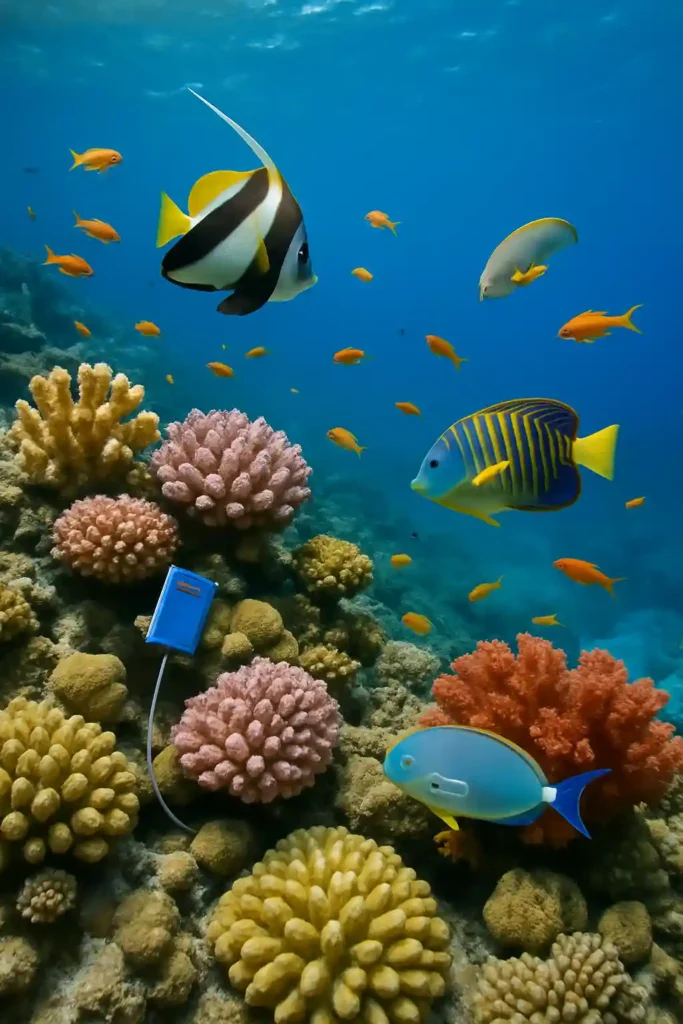
Advanced technologies are being deployed to support these conservation efforts. Drone surveys equipped with multispectral cameras and satellite imagery are used for coral reef mapping, enabling real-time monitoring of marine ecosystems and facilitating swift responses to environmental changes.
The Circular Carbon Economy: A Framework for Sustainability
Underpinning Saudi Arabia’s approach to emissions reduction is the Circular Carbon Economy (CCE) framework, which the Kingdom has championed both domestically and in international forums. This framework is based on four Rs: Reduce, Reuse, Recycle, and Remove carbon.
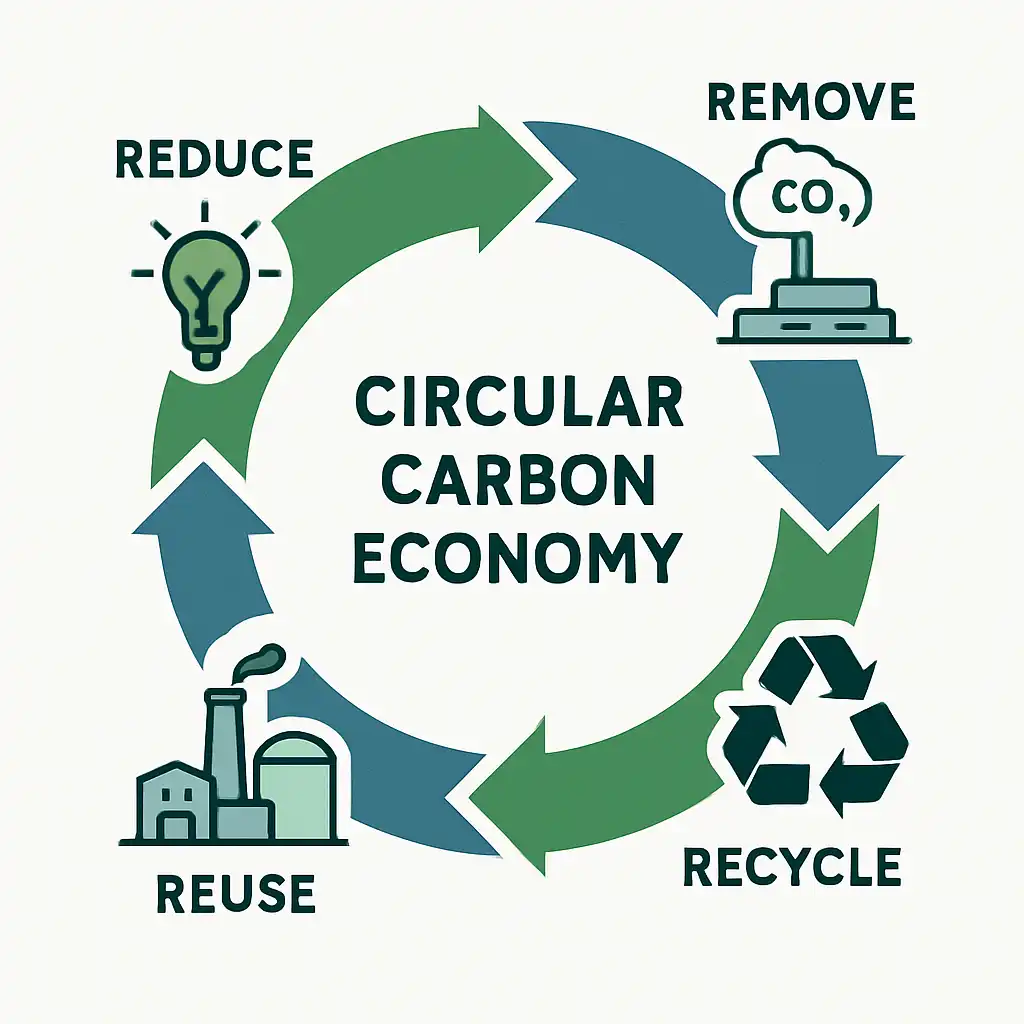
The CCE approach recognizes that addressing climate change requires a comprehensive strategy that goes beyond simply reducing emissions. It involves developing technologies and practices that allow for the capture, utilization, and storage of carbon, as well as the transformation of waste into valuable resources.
Saudi Arabia is positioning itself as a global leader in the implementation of the Circular Carbon Economy, with initiatives ranging from carbon capture and storage projects to the development of sustainable fuels and materials. This leadership reflects the Kingdom’s understanding that environmental sustainability and economic development can and must go hand in hand.
Progress and Achievements
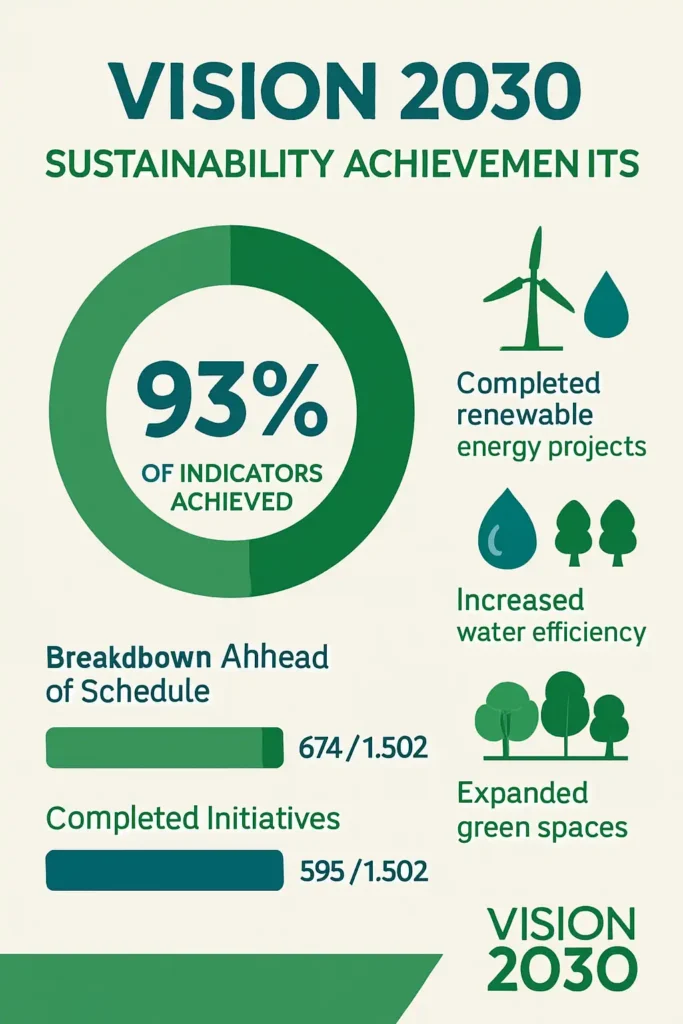
The latest annual reports on Vision 2030 sustainability goals reveal impressive progress across sustainability initiatives. According to the 2024 progress report, 93 percent of Vision 2030 indicators have either been achieved, exceeded their goals, or are close to achieving their interim targets. Of the 1,502 total initiatives launched under Vision 2030, 674 have been completed, and another 596 are advancing as scheduled.
This high success rate is particularly notable given the scale and complexity of the transformation underway. Each initiative contributes to larger national priorities, from renewable energy development to ecosystem conservation, reflecting years of investment in institutional capacity and coordination frameworks.
The Public Investment Fund (PIF), Saudi Arabia’s sovereign wealth fund, has played a crucial role in financing and driving large-scale sustainability projects. Its assets under management have reached SR3.53 trillion by the end of 2024 more than tripled since the launch of Vision 2030 sustainability goals exceeding annual targets and providing the financial foundation for continued progress.
Flagship Projects Showcasing Sustainability
Several flagship projects exemplify Saudi Arabia’s commitment to sustainability under Vision 2030 sustainability goals. Perhaps the most ambitious is NEOM, a planned cross-border city in the Tabuk Province of northwestern Saudi Arabia. NEOM is designed to be powered entirely by renewable energy and will incorporate cutting-edge sustainable technologies throughout its infrastructure.
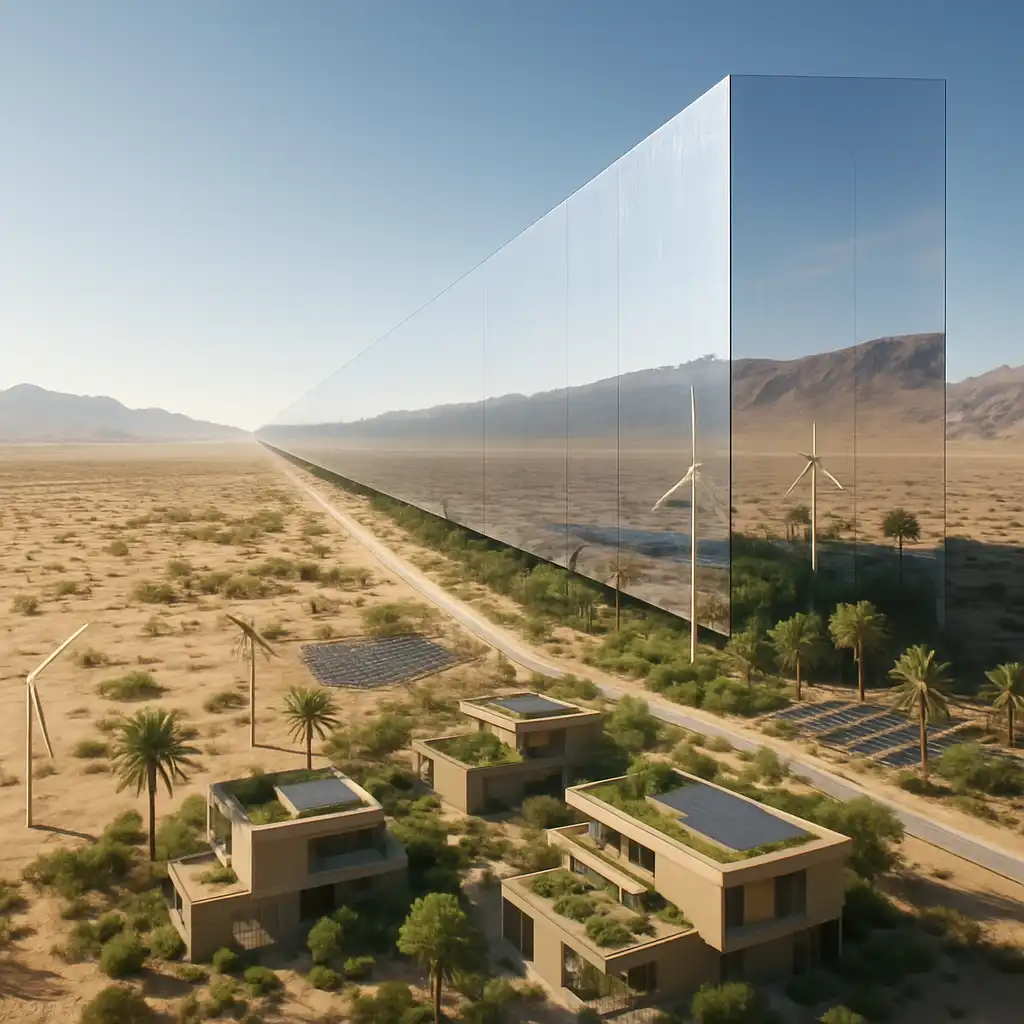
The centerpiece of NEOM is “The Line,” a 170-kilometer urban development where residents will live in harmony with nature while having all modern amenities within a five-minute walk. This revolutionary approach to urban planning eliminates the need for cars and roads, dramatically reducing the environmental footprint of urban living.
Other notable projects include the Red Sea Global development, which aims to create luxury tourism destinations that preserve and enhance the natural environment rather than degrading it. The project’s commitment to conservation includes monitoring and restoring coral reefs and protecting vital marine ecosystems.
The King Salman Park project in Riyadh integrates sustainable building practices with extensive green spaces and energy-efficient systems, demonstrating how large-scale urban development can prioritize environmental conservation while providing valuable public amenities.
Challenges and Future Outlook
Despite significant progress, Saudi Arabia’s journey toward sustainability faces challenges. The transformation of an economy historically dependent on oil revenues requires not only technological innovation but also cultural and institutional changes.
The initial costs of sustainable materials and technologies can be higher than conventional alternatives, though these investments typically yield long-term savings. The harsh desert climate presents unique challenges for building design, water conservation, and ecosystem restoration, requiring innovative solutions tailored to local conditions.
Additionally, the development of a skilled workforce capable of implementing and maintaining sustainable technologies and practices remains an ongoing priority. Looking ahead, Saudi Arabia’s sustainability agenda appears poised for continued growth and innovation.
The Kingdom’s commitment to achieving net-zero emissions by 2060 will likely accelerate the adoption of sustainable practices across all sectors. Emerging technologies such as green hydrogen production, advanced energy storage systems, and artificial intelligence for resource management represent promising frontiers for further advancement.
Conclusion
Vision 2030 sustainability goals represent a profound transformation in Saudi Arabia’s approach to development and environmental stewardship. By setting ambitious targets for emissions reduction, afforestation, and ecosystem protection, the Kingdom is charting a course toward a more sustainable future while creating new opportunities for economic growth and improved quality of life.
The progress achieved thus far demonstrates that with clear vision, strategic planning, and committed implementation, even the most ambitious sustainability goals can be within reach. As Saudi Arabia continues its journey toward Vision 2030, its experiences offer valuable lessons for other nations seeking to balance economic development with environmental responsibility.
In the words of Crown Prince Mohammed bin Salman, as Saudi Arabia enters the ninth year of Vision 2030 sustainability goals :”We have achieved our targets and exceeded some of them. We will continue to move steadily toward our vision 2030 sustainability goals.
We renew our resolve to redouble our efforts and accelerate the pace of implementation, to invest in every opportunity and strengthen the Kingdom’s position as a leading country on the global level.”
This commitment to sustainability is not merely an environmental choice but a strategic investment in Saudi Arabia’s future and potentially, a blueprint for sustainable development in challenging environments worldwide.

